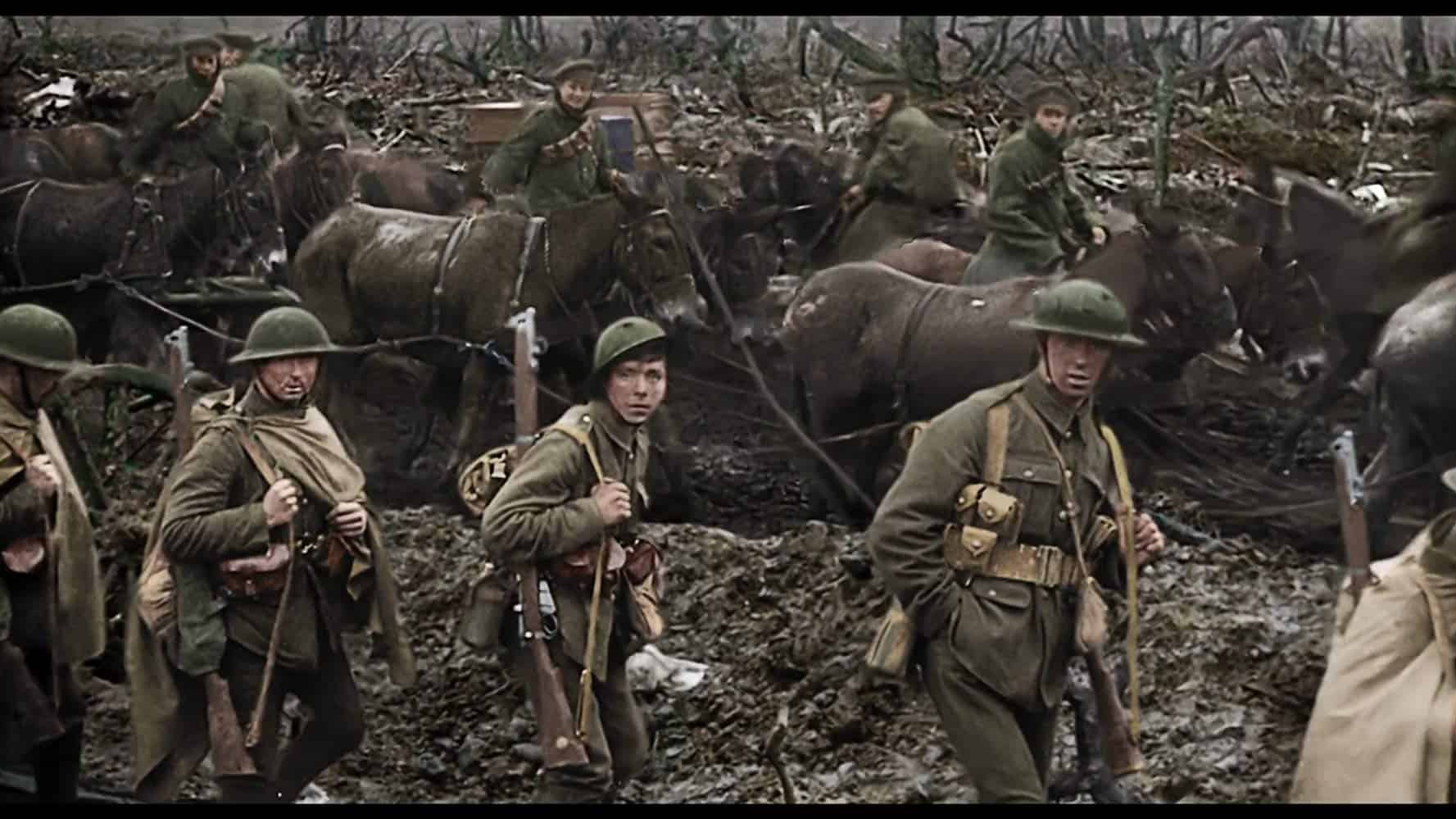World War I has faded from memory to history. Now that the centenary of the war’s end has come to pass this past November, there is virtually no one alive who has any memories at all of a time that engulfed the world in war and defined the Twentieth Century. Yet just because World War I is now history does not mean that it must be distant to us. This is the remarkable service that Peter Jackson’s film They Shall Not Grow Old does. 1
In 2014, the Imperial War Museum in Great Britain asked Jackson to create a documentary about the First World War using their footage in time for the 100th anniversary of the war’s end. Provided with 100 hours of silent film footage from the war itself and 600 hours of audio recordings of veterans made in the 1970s, Jackson set to work, and the result is spectacular.
Jackson is a gifted world-builder. When he is at the height of his creative game, he is able to pour his heart into creating a rich cosmos for characters to inhabit, one so detail-laden that the audience is likewise drawn into the world. This was his great success in The Lord of the Rings, and he has done the same here.
With his immense attention to detail, Jackson gradually draws you in to the world of these soldiers. In the Lord of the Rings trilogy, elements were added onto costumes and sets that no viewer would ever see, adding to the reality of the world. Jackson gives this same level of attention as he restores and colorizes the footage, using his own vast collection of World War I paraphernalia to make sure even small items like unit patches were colored exactly right.
In addition to restoring the footage so that the images and people move in a natural fashion, and painstakingly colorizing all the images, Jackson also got sound artists and lip readers to look at the scenes and provide the appropriate sounds and dialog. When an artillery blast shakes the tiles off a nearby roof, you hear a cascade of tiles fall, and then one more “plunk” as the final tile slides off. At one point, you see a sergeant tell his men “smile for the camera boys—make your mothers think I’ve taken care of you” as they march past the camera. You are hearing something you were never meant to hear.
Neither the original filmmakers nor the men being filmed ever had any expectation that the words they said in front of the camera would be heard. To hear the words of the men on screen gives you a startling experience of intimacy with them. Jackson also made sure that accents used were appropriate to where the unit came from, another small touch that adds to the realism.
Between the color, the image quality, the sounds, and the voices, the distance that one normally feels when watching old footage is obliterated. You cease to see the men on film as historical subjects and start to see them as people. You get to know them as boisterous young men—some as young as 16 years old—as friends, husbands, family members. The film begins in black and white, becomes more and more restored as you move through basic training with the men, and then goes into full color when you arrive in the trenches. You have become comrades in arms.
In addition to the technical mastery, the stylistic choices likewise keep you in the trenches with these men. Jackson chose to keep the documentary at all times with British units on the Western Front, never even going over to check on other allied units or other battlefronts, and certainly not German forces. Your world is as small as that of the soldier in the trench. These are your comrades, and you will not leave them.
Nor is there a narrator to give you the grand scope. In The World at War, arguably the definitive World War II documentary (likewise produced by the Imperial War Museum), the calm voice of Lawrence Olivier guides you through the war, always grounding you in the big picture. This documentary, in contrast, has no narrator or tour guide, no one to give you a sense of the higher purpose of this war—perhaps rightly so. There are only the interviews with the veterans themselves which play over the footage.
At the moment peace is declared, you switch back to black-and-white, and pull away from these men and this world you have come to know, paralleling how they have left a world and people they knew, only to return to an unfamiliar home. Over the course of the documentary, you experience joy, fear, and sadness along with the soldiers.
Jackson has stated that his goal with this film was to make people ask who in their family fought in World War I (for him, it was a grandfather), and to make the war seem less distant for people. In this, he has succeeded admirably. Events like World War I are, for better or worse, part of our heritage, and in this documentary Jackson immerses us in it so that we feel the connection to our history, to our comrades in arms.
- This film has had a limited release in U.S. theaters on December 17th and 27th. It will be showing again in theaters this coming Monday, January 21st. Don’t miss it! ↩


